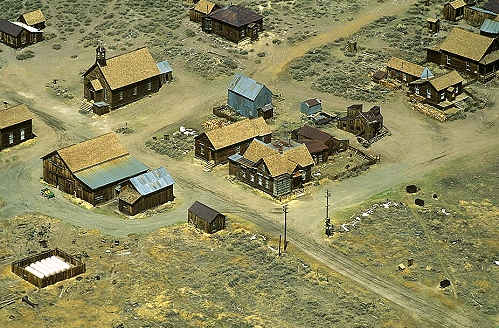Over spring break, I drove to Utah with a group of friends to camp in a couple of the incredible national parks that the state has to offer. The drive consisted of a little over 1,000 miles and traveling through the depths of Washington, Oregon, Idaho, and finally, Utah. On the rare occasion that our route deviated from the major highways, I noticed a few disheveled clumps of chipped-painted buildings and houses that looked like nobody had gone inside of them in years. I quickly realized these ill-fated areas were ghost towns. Simply put, ghost towns are abandoned cities that contain a lot of physical remains, such as buildings and houses, that came from a drastic movement in economic activity. Having lived in urban and suburban areas my entire life, ghost towns have been very little more than settings for climactic scenes in spaghetti-western films. In reality, ghost towns are extremely prominent in the United States. In Washington alone, there are approximately 56 recognized ghost towns, and surprisingly, three of the towns are in Pierce County. Now, many of these towns are now off-the-beaten-path tourist attractions for families and history enthusiasts; but they are a harsh reminder of creative destruction—when a new economic trend brings about the demise of what preceded it, it can remove a city’s entire reason for existence.
Most ghost towns were caused by the extreme booms and busts caused by extractive industries such as mining in the 19th and early 20th century. One of the most classic historical examples is the boomtowns and eventual ghost towns that came from the Gold Rush of 1849. About 250,000 people migrated to California with the hopes of making a fortune by doing relatively little work. As people began to settle in camps, merchants and mining companies followed, hoping to make money off of the growing population by establishing businesses. Because the towns were built so quickly, the infrastructure was extremely rickety and unsustainable. As the populations of these boomtowns increased, residents started to experience the consequences of the tragedy of the commons. This is an economic theory that individuals that act independently and according to his or her own self interest will behave contrary to the best interests of the whole group, eventually depleting some common resource. In this case, as gold started to run out in a specific area, the town went bankrupt and people moved elsewhere, leaving the unstable capital to rot as people searched for the next area to search for financial success.
The story of the tragedy of the commons during the Gold Rush, along with many other historical examples of ghost towns, was caused due to the fact that the resources that initially brought people to settle in that area were open access. As I explained in a previous blog post, goods, including property rights, can be classified based on their rivalry and excludability. Rivalry means that the use of a good by one person prevents the use by somebody else. Excludability means that consumers that don’t pay for the good can be prevented from using it. Open access goods are rival, but non-excludable. This means that although nobody had to pay to mine on the land that had gold reserves, if one person extracted all of the gold from a certain area, nobody else could get it. Because the property that the gold boom towns settled in weren’t directly managed by anyone, there was no constraint that sustained the amount that could be extracted, therefore increasing the volatility of the local economy.
Our nation’s economic landscape is constantly changing. The United States has come a long way in terms of citizen economic migration since the promise of new markets during the age of the Gold Rush. Now, movement is a bit subtler, and a lot less devastating. With a few international exceptions, such as a failed attempt to develop artificial islands in the shape of the map of the world near Dubai, the 21st century hasn’t seen anything close to the archetypically extreme boom-and-bust stories that came with the development of the United State’s economy. Nevertheless, ghost towns tell important stories of the fatal consequences of ultra-rapid depletion of local resources.

